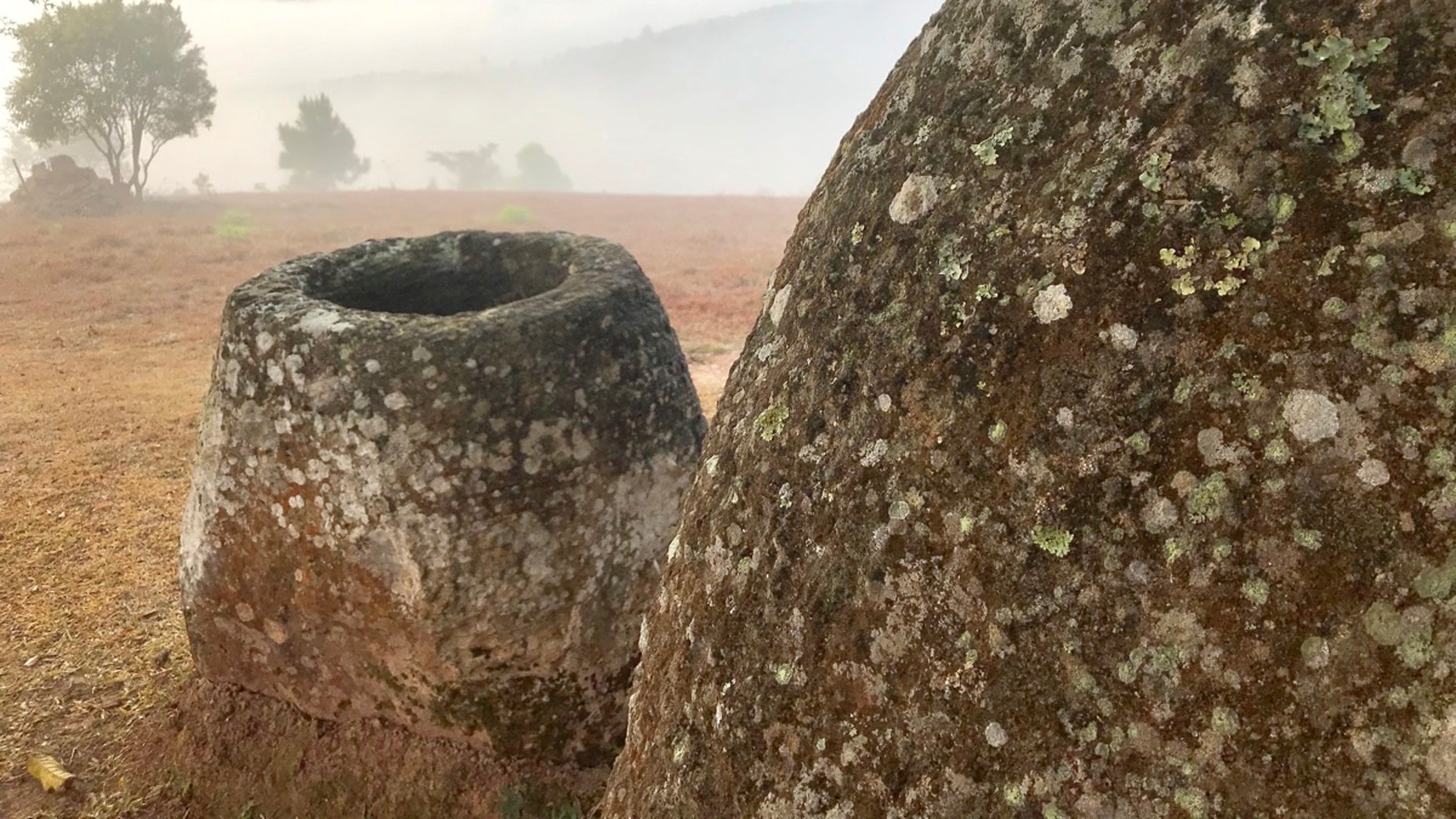
Local legends contend a forged mill jars were combined by a competition of giants to decoction rice beer, though archaeologists consider they were used in funeral rituals.
(Plain of Jars Archaeological Project)
More than 100 hulk mill jars, suspicion to have been used in funeral rituals thousands of years ago, have been rediscovered during ancient sites in forests, on hillsides and along towering ridges in remote executive Laos.
The forged mill jars are sparse opposite miles of a rugged, tiger-haunted Xiangkhouang province, about 200 miles (320 kilometers) north of Laos’ capital, Vientiane, in South Asia. They have been dubbed ” jars of a passed ” by researchers.
Several tellurian burials, suspicion to be around 2,500 years old, have been found during some of these sites in Laos, though zero is famous about a people who creatively done a jars. [In Photos: Exploring a Mysterious Plain of Jars Site]
An speed of archaeologists from Laos and Australia visited a Xiangkhouang segment in Feb and Mar this year to request famous jar sites and to hunt for new jars-of-the-dead sites and mill quarries.
More From LiveScience
The new finds uncover that a puzzling enlightenment that done a mill jars was geographically some-more widespread than formerly thought, pronounced Louise Shewan, an archaeologist during Monash University in Melbourne, Australia, and one of a speed leaders.
The largest and best-known jar site is a famous Plain of Jars, located in comparatively open nation nearby a city of Phonsavan. That site contains around 400 forged mill jars, some as high as 10 feet (3 m) and weighing some-more than 10 tons (9,000 kilograms), and a initial archaeological review of it was done in a 1930s.
But Shewan pronounced that a infancy of a jar sites customarily contained fewer than 60 forged mill jars, and were found in forested and alpine turf surrounding a Plain of Jars, widespread over thousands of block miles.
Ancient mill jars
Shewan told Live Science that a hunt for new jar sites took a speed into “extremely rugged, forested terrain,” as a researchers looked for ancient corpse reported by internal people.
Relying on internal believe meant a archaeologists could equivocate a ever-present risk of unexploded Vietnam War-era bombs, she said. U.S. warplanes forsaken an estimated 270 million cluster bombs on Laos during a war. The Laos supervision group that oversees clearway efforts reports that some-more than 80 million unexploded bombs are sparse around a country.
The latest expedition, in further to accurately mapping many of a reported sites in a Xiangkhouang region, found 15 new jar sites, containing a sum of 137 ancient mill jars.
Shewan pronounced that a newly detected jars were identical to those found on a Plain of Jars, though some sundry in a forms of mill that they were done from, their shapes and a approach a rims of a jars were formed.
Burial rituals
Local legends embody a story that a huge mill jars were done by giants, who used a vessels to decoction rice drink to applaud a feat in war.
But archaeologists consider that during slightest some of a forged mill jars were used to reason passed bodies for a time, before their skeleton would be spotless and buried. [Top 10 Weird Ways We Deal with a Dead]
Although a stays of elaborate tellurian burials have been found during some of a jar sites, archaeologists aren’t certain if a jars were done for a purpose of a burials or if a burials were achieved later.
Excavations in 2016 suggested that some of a mill jars were surrounded by pits filled with tellurian skeleton and by graves lonesome by vast forged disks of stone. These seem to have been used to symbol a grave locations.
The latest speed also found buried disks and other artifacts. Those enclosed several beautifully forged mill disks, flashy on one side with concentric circles, tellurian total and animals. Curiously, a mill discs were always buried with a forged side face down.
“Decorative figure is comparatively singular during a jar sites, and we don’t know because some disks have animal imagery and others have geometric designs,” speed co-leader Dougald O’Reilly, an archaeologist during Australian National University in Canberra, pronounced in a statement.
The excavations around some of a mill jars also suggested musical ceramics, potion beads, iron tools, musical disks that were ragged in a ears and shaft whorls for cloth making. Researchers also detected several tiny clay jars that looked only like a hulk mill jars and that were buried with a dead.
The scientists will now use a information and photographs from a new jar finds to refurbish a sites in practical existence during Monash University; then, archaeologists opposite a creation can use a VR to inspect a sites in detail.
- 7 Bizarre Ancient Cultures That History Forgot
- 25 Cultures That Practiced Human Sacrifice
- In Photos: Intricately Carved Stone Balls Puzzle Archaeologists
Originally published on Live Science.















